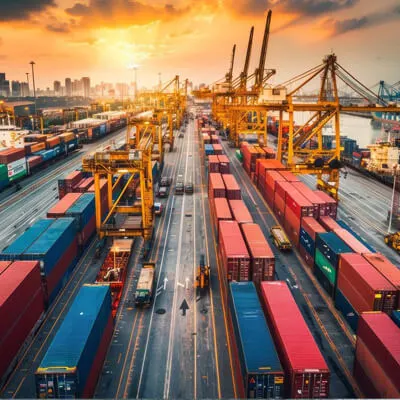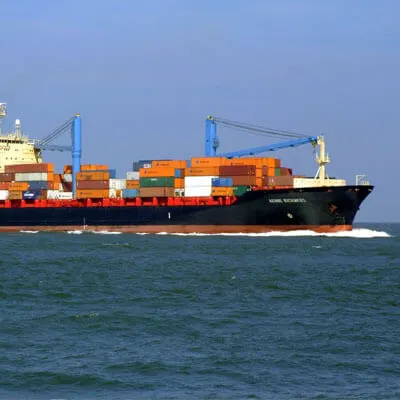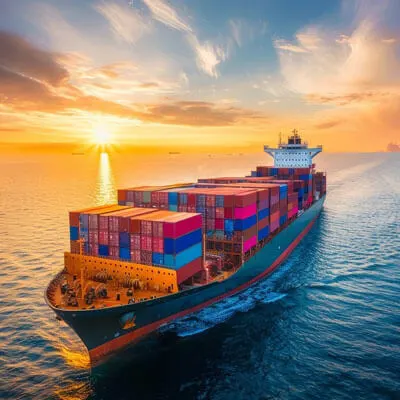+
CIF Explained
CIF stands for Cost, Insurance, and Freight, a shipping term under Incoterms where the seller assumes responsibility for these three elements. In international transactions, the seller is accountable for exporting goods, arranging transportation to the destination port, and ensuring the cargo is insured throughout the journey.
Under CIF terms, the seller's responsibility ends once the goods are safely loaded onto the vessel. However, the seller covers the freight charges and insurance until the shipment reaches the destination port. From there, the buyer takes over, managing the import process and handling customs duties and delivery to the final destination.
CIF applies exclusively to sea and waterway transport and is commonly used for full container shipments, though it can also apply to less-than-container loads (LCL).
When shipping under CIF terms, the seller agrees to handle all export-related tasks until the goods are loaded onto the vessel. These include:
Export Packaging: Ensuring the goods are properly packed for export and compliant with any country-specific labeling or marking requirements.
Loading Charges: Covering costs for loading the shipment onto the first carrier from the seller’s premises.
Delivery to Port: Managing transportation from the seller’s warehouse to the departure port.
Export Duties, Taxes, and Customs Clearance: Handling customs fees and procedures in the exporting country.
Origin Terminal Charges: Paying handling fees at the port of origin.
Loading on Carriage: Covering expenses to load goods onto the vessel.
Freight Costs: Paying for transportation from the departure port to the destination port.
Insurance: Obtaining cargo insurance to cover risks until the shipment reaches the port of destination.
Once the goods are on board, the buyer assumes all risks and responsibilities, including:
Destination Terminal Charges: Covering costs for unloading and handling the cargo at the destination port.
Delivery to Destination: Arranging transportation from the port to the final delivery location.
Unloading Costs: Paying for unloading goods upon arrival at the destination.
Import Duties, Taxes, and Customs Clearance: Managing customs clearance and covering associated fees.
Simplified Export Process: The seller manages export procedures and shipping logistics, making CIF ideal for inexperienced buyers unfamiliar with the origin country’s regulations.
Insurance Coverage: Seller-provided insurance covers risks like piracy or weather-related damage during transit.
Convenience: Buyers can focus on import logistics while the seller handles transportation in the exporting country.
Export Compliance: The seller ensures goods meet export requirements, beneficial for hazardous or restricted items.
Risk Transfer at Loading: Once goods are loaded onto the vessel, the buyer assumes all risks.
Hidden Costs: Buyers pay import duties on the total value, including freight and insurance, which may inflate costs.
Misunderstanding Terms: Buyers may mistakenly assume CIF includes delivery to their door, leading to unexpected expenses at the destination port.
Potential Overpricing: Sellers may select slower, less efficient shipping methods or inflate freight and insurance costs.
Destination Charges: Shipping companies may increase destination handling fees, resulting in additional costs.
Insurance Limitations: Seller-arranged insurance may list the seller as the beneficiary, complicating claims if goods are damaged.
Non-Compliance Risks: Sellers may overlook specific import regulations, leaving buyers liable for fines, such as the U.S. Importer Security Filing (ISF) penalty.
CIF terms are suited for sea or waterway transport, especially for buyers new to importing. While CIF simplifies the export process, it often comes at a higher cost compared to using a freight forwarder for customized shipping solutions. Experienced buyers may prefer alternative Incoterms for greater control over shipping logistics.
Does CIF Include Import Duties?
No, import duties, VAT, and taxes are the buyer’s responsibility. CIF covers export requirements and transportation to the destination port.
What Is the Difference Between CIF and FOB?
Under CIF, the seller handles export, loading, and freight to the destination port, as well as insurance. In FOB (Free on Board), the seller’s responsibility ends once goods are loaded onto the vessel, giving buyers more control over shipping arrangements.
How Does CIF Differ from CIP?
CIP (Carriage and Insurance Paid To) requires the seller to provide insurance for the entire transportation route, whereas CIF covers insurance only until the destination port.
Can CIF Be Used for Air Freight?
No, CIF is limited to ocean and waterway shipments. For air freight, CIP is a better alternative.
Is CIF Suitable for Small Parcels?
Yes, CIF can be used for both full container loads (FCL) and less-than-container loads (LCL), regardless of parcel size.
As a leading 3PL service provider, GOWIN offers a comprehensive suite of services under CIF (Cost, Insurance, and Freight) terms, ensuring a seamless shipping experience for both buyers and sellers.
For sellers, GOWIN facilitates logistics coordination, insurance procurement, document management, and customs clearance support at the port of origin. These services enable sellers to efficiently arrange the transportation of goods while adhering to CIF terms, effectively minimizing shipping delays and risks.
For buyers, GOWIN provides real-time tracking and updates on shipment status, customs clearance assistance, and post-delivery solutions such as warehousing and distribution. Additionally, we offer expert consultation on international trade regulations and risk management services to safeguard the interests of both parties.
With these comprehensive services, GOWIN streamlines the shipping process, delivering value and peace of mind for both buyers and sellers engaged in CIF transactions.
You can also learn more Trade Terms at GOWIN Knowledge Hub.







